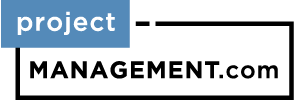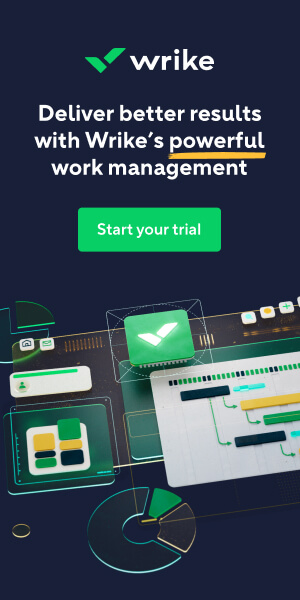The decision-making process is a crucial component of any project’s lifecycle. It’s generally an ongoing activity that requires the cooperation of every project stakeholder, from organizational leaders to individual project stakeholders, and it’s a process that should never be taken lightly.
But how can we ensure consistency during key decision-making processes? Is there a standardized solution we can use to assign individual jobs and responsibilities to project stakeholders?
For many organizations and project leaders, the answer is found in the DACI decision-making framework.
What is the DACI Model?
An acronym that stands for Driver, Approver, Contributor, and Informed, DACI provides a structured approach to project management. It achieves this through the naming clear roles that cover the senior levels of a project management team. The DACI model is often utilized in areas like product development, software development, or any project that requires a streamlined and versatile approach.
Each role has clearly defined expectations for the person or people occupying that position in the model. By understanding what’s expected, communication and decisionmaking are streamlined as duplicated effort is largely eliminated.
Driver (D)
This role is generally reserved for the project leader or manager. While there are special cases where multiple Drivers are involved in a single project, particularly when heading up different tasks of a large or complicated project, this does complicate the process. In either case, the driver is accountable for overseeing an entire project’s lifecycle from inception to completion.
Some of the Driver’s core responsibilities include:
- Establishing and ensuring project deliverables
- Assigning individual tasks and activities
- Setting goals, milestones, and deadlines
- Organizing and running meetings
- Maintaining project documentation
It’s ultimately up to the Driver to direct the project’s trajectory and ensure success for everyone involved. However, much of their success hinges on the supporting roles in the DACI framework and the productivity of the project’s team members.
Approver (A)
The project’s Approver has the final say on every detail of the project. Much like the driver, there are special cases that utilize multiple Approvers – but these are few and far between. For the sake of simplicity and the DACI model, it’s best to stick with a single Approver.
Regardless of their numbers, the Approver plays a vital role in the project lifecycle. Since they don’t play such a hands-on role, like the project manager or driver, they assume a non-biased, objective approach. As such, they can provide some much-needed clarity into an otherwise confusing and muddied decision-making process.
Contributor (C)
Project Contributors are those that inform the decision-making process based on their prior knowledge or hands-on experience. Specifically chosen by the project driver, Contributors typically account for the majority of individuals within a DACI matrix.
Some potential Contributors include:
- Business and data analysts
- Industry experts
- Business owners
- Investors
Because of their unique and fact-based perspectives, Contributors are a valuable part of the decision-making process. Their knowledge and expertise generally serves as a launchpad for the entire project lifecycle, and they often have a significant influence on the final, most important decisions, too.
Informed (I)
While the first three elements of the DACI model focus on those with significant involvement in a project’s decision-making process the fourth and final one covers those with no direct authority or association. Even if they’re not directly involved, however, there are some individuals who still need to be updated on a project’s overall progress. This typically occurs because the final state of a project has a direct affect on their day-to-day responsibilities.
When to Use the DACI Model
The DACI model, often represented with a matrix, provides a clear chart to track the different roles of a project’s key stakeholders. It’s best used when different individuals assume responsibility for multiple aspects of a project.
While a software developer, for example, might be the driver for online coding and hosting, they would only qualify as an Informed participant when it comes to marketing. Likewise, a marketing coordinator who drives an organization’s advertising campaigns would take a much smaller role – if any at all – in website design, requirements gathering, or final production.
Not only does the DACI model designate key decision-makers and supporters for the various phases of the project, but it offers complete visibility for all of the project’s stakeholders. A new DACI chart should be created at the beginning of every new project.
What is the RACI Matrix?
The DACI model is ideal for clarifying senior-level roles in the decision-making process of a project. In contrast, a RACI (Responsible, Accountable, Consulted, Informed) Matrix is used when tracking project deliverables and the completion of individual activities within a larger project.
When to Use the RACI Matrix
Since it provides visibility into the roles and responsibilities of subordinate project team members, RACI is typically utilized as a part of the human resources planning process. It does have pertinent uses in day-to-day project management, especially when organizing and tracking large or complicated projects.
Like a DACI matrix, RACI charts are generally created by a project manager or driver. Ideally, a new chart is made at the beginning of every new project.
Which One is Right for You?
The argument of DACI vs RACI often comes down to your intended purpose. If you’re trying to gain better insight into the decision-making process of a project or, by extension, your organization, the DACI model is the clear choice. Conversely, a RACI matrix is invaluable when clarifying individual roles and assigning responsibilities to different team members.
Remember, DACI and RACI can be – and often are – used together. Although they are very similar concepts, they have very different applications in project management and, as a result, achieve very different goals.
Once created, both of these charts can be reused for future projects with minimal modification required. The resulting RACI or DACI model template will help you streamline the project management process even further and, eventually, cut even more time from the average project lifecycle.
Taking a Structured Approach to Project Management
The DACI framework lets you take a standardized and structured approach to project management, especially when using a DACI template. It helps you clarify roles and responsibilities for every member of the decision-making team, ultimately facilitating increased visibility and accountability within key decision-making processes.
When implemented by a skilled project manager and applied across the senior levels of a project team, DACI enables greater levels of communication, collaboration, efficiency, and, as a result, project success.












